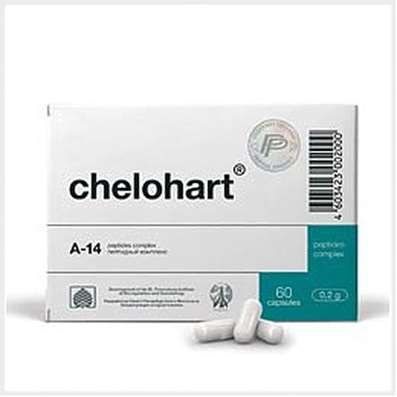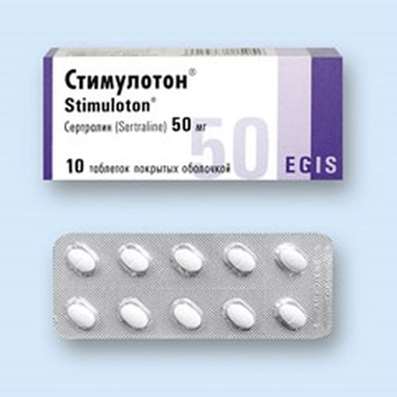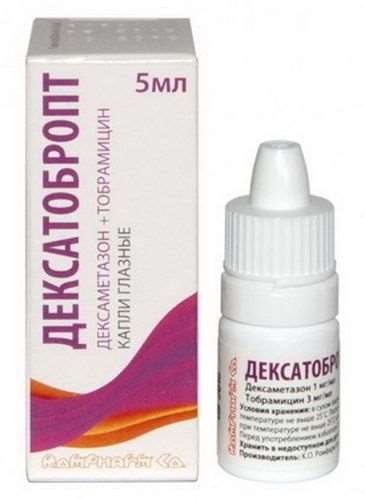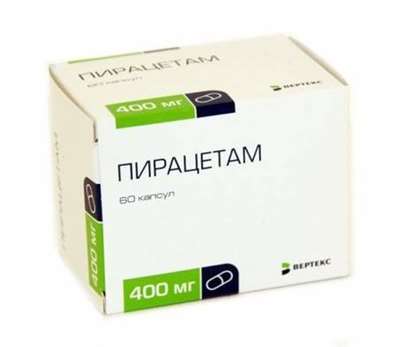Instruction for use: NovoRapid FlexPen
I want this, give me price
Active substance Insulin aspart
ATX codeA10AB05 Insulin aspart
Pharmacological group of substance Calcitonin
A hypoglycemic agent is a short-acting human insulin analog [Insulins]
Nosological classification (ICD-10)
E10 Insulin-dependent diabetes mellitus
Decompensation of carbohydrate metabolism, Diabetes mellitus, Diabetes insulin sugar, Diabetes mellitus type 1, Diabetic ketoacidosis, Insulin-dependent diabetes, Insulin-dependent diabetes mellitus, Coma hyperosmolar non-ketoacidotic, Labile form of diabetes mellitus, Violation of carbohydrate metabolism, Type 1 diabetes mellitus, Type I diabetes mellitus, Insulin-dependent diabetes mellitus, Type 1 diabetes mellitus
E11 Non-insulin-dependent diabetes mellitus
Acetonuric diabetes, Decompensation of carbohydrate metabolism, Diabetes insulin-independent sugar, Diabetes sugar type 2, Type 2 Diabetes, Non-insulin-dependent diabetes, Non-insulin dependent diabetes mellitus, Non-insulin-dependent diabetes mellitus, Insulin resistance, Insulin resistant diabetes mellitus, Coma lactobacillus diabetic, Violation of carbohydrate metabolism, Type 2 diabetes mellitus, Diabetes mellitus type II, Diabetes mellitus in adulthood, Diabetes mellitus in old age, Diabetes insulin-independent, Diabetes mellitus type 2, Sugar insulin-independent diabetes type II
Composition
NovoRapidŽ PenfillŽ
Solution for subcutaneous and intravenous administration 1 ml
active substance:
Insulin aspart 100 ED (3.5 mg)
Auxiliary substances: glycerol - 16 mg; Phenol - 1.5 mg; Meta-cresol - 1.72 mg; Zinc - 19.6 μg (in the form of zinc chloride); Sodium chloride - 0.58 mg; Sodium hydrogen phosphate dihydrate - 1.25 mg; Sodium hydroxide 2M - about 2.2 mg; Hydrochloric acid 2M - about 1.7 mg; Water for injection - up to 1 ml
One cartridge contains 3 ml of a solution equivalent to 300 U
NovoRapidŽ FlexPenŽ
Solution for subcutaneous and intravenous administration 1 ml
active substance:
Insulin aspart 100 ED (3.5 mg)
Auxiliary substances: glycerol - 16 mg; Phenol - 1.5 mg; Meta-cresol - 1.72 mg; Zinc - 19.6 μg (in the form of zinc chloride); Sodium chloride - 0.58 mg; Sodium hydrogen phosphate dihydrate - 1.25 mg; Sodium hydroxide 2M - about 2.2 mg; Hydrochloric acid 2M - about 1.7 mg; Water for injection - up to 1 ml
One syringe pen contains 3 ml of a solution equivalent to 300 U
Description of dosage form
Clear colorless solution.
pharmachologic effect
Pharmacological action - hypoglycemic.
Pharmacodynamics
Insulin aspart is a short-acting human insulin analog produced by the method of recombinant DNA biotechnology using the strain Saccharomyces cerevisiae in which the amino acid proline at position B28 is substituted for aspartic acid.
Interacts with a specific receptor of the external cytoplasmic membrane of cells and forms an insulin-receptor complex that stimulates intracellular processes, incl. Synthesis of a number of key enzymes (including hexokinase, pyruvate kinase, glycogen synthase). Reduction of blood glucose is due, incl. Increased intracellular transport, increased digestion, stimulation of lipogenesis, glycogenogenesis, a decrease in the rate of production of glucose by the liver.
Substitution of amino acid proline in position B28 for aspartic acid in insulin aspart reduces the tendency of molecules to form hexamers, which is observed in a solution of normal insulin. In this regard, insulin aspart is much more quickly absorbed from the subcutaneous fat and starts to act faster than soluble human insulin. Insulin aspart strongly reduces blood glucose in the first 4 hours after ingestion than soluble human insulin. The duration of action of insulin aspart after the SC is shorter than soluble human insulin.
After sc administration, the effect of the drug begins within 10-20 minutes after administration. The maximum effect is observed 1-3 hours after the injection. The duration of the drug is 3-5 hours.
Clinical studies involving patients with type 1 diabetes mellitus demonstrated a reduced risk of nocturnal hypoglycemia with insulin aspart compared to soluble human insulin. The risk of diurnal hypoglycemia did not increase reliably.
Insulin aspart is an equipotential soluble human insulin based on the molarity index.
Adults. Clinical studies involving patients with type 1 diabetes mellitus exhibit a lower postprandial blood glucose concentration when insulin is administered aspart compared to soluble human insulin.
The elderly. A randomized double-blind cross-over study of the pharmacokinetics and pharmacodynamics (PK / PD) of insulin aspart and soluble human insulin in elderly patients with type 2 diabetes mellitus was performed (19 patients aged 65-83 years, mean age 70 years). The relative differences in the pharmacodynamic properties between insulin aspart and soluble human insulin in elderly patients were similar to those in healthy volunteers and younger patients with diabetes mellitus.
Children and teenagers. The use of insulin aspart in children showed similar results from long-term glycemic control when compared to soluble human insulin.
A clinical study using soluble human insulin before meals and insulin aspart after meals was performed in young children (26 patients aged 2 to 6 years); And a single-dose FK / PD study was performed in children (6-12 years) and adolescents (13-17 years). The pharmacodynamic profile of insulin aspart in children was similar to that of adult patients.
Pregnancy. Clinical studies of the relative safety and efficacy of insulin aspart and human insulin in the treatment of pregnant women with type 1 diabetes mellitus (322 examined pregnant women, 157 received insulin aspart, 165 - human insulin) showed no adverse effects of insulin aspart during pregnancy or fetal health / Newborn baby.
Additional clinical studies of 27 women with gestational diabetes, who received insulin aspart and human insulin (14 women received insulin aspart, 13 - human insulin), showed comparability of safety profiles along with a significant improvement in glucose control after eating with insulin aspart.
Preclinical safety data
Pre-clinical studies have not identified any hazard to humans, based on data from generally accepted pharmacological safety studies, re-use toxicity, genotoxicity, and reproductive toxicity.
In in vitro tests, including binding to insulin and IGF-1 receptors, and the effect on cell growth, the behavior of insulin aspart is very similar to that of human insulin. The results of the studies also showed that the dissociation of the binding of insulin aspart to the insulin receptor is equivalent to that of human insulin.
Pharmacokinetics
After sc administration of insulin, aspart Tmax in plasma is on average 2 times less than after administration of soluble human insulin. Cmax in blood plasma averages (492 ą 256) pmol / l and is achieved 40 minutes after a dose of 0.15 U / kg dose is given to patients with type 1 diabetes mellitus. The concentration of insulin returns to baseline after 4-6 hours After administration of the drug. The absorption rate is somewhat lower in patients with type 2 diabetes, which leads to a lower Cmax (352 ą 240) pmol / L - and a longer Tmax (60 min). The intra-individual variability in Tmax is significantly lower when using insulin aspart compared to soluble human insulin, whereas the indicated variability in Cmax for insulin is higher.
Pharmacokinetics in children (6-12 years) and adolescents (13-17 years) with type 1 diabetes mellitus. Absorption of insulin aspart is rapid in both age groups with Tmax, similar to that in adults. However, there are differences in Cmax in the two age groups, which emphasizes the importance of individual dosage of the drug.
The elderly. The relative differences in the pharmacokinetics between insulin aspart and soluble human insulin in elderly patients (65-83 years old, mean age 70 years) type 2 diabetes mellitus were similar to those in healthy volunteers and in younger patients with diabetes mellitus. In elderly patients, a reduction in the rate of absorption was observed, which resulted in an increase in Tmax-82 (variability of 60-120) min, whereas Cmax was the same, with the type 2 diabetes observed in younger patients and slightly less than in type 1 diabetes mellitus .
Lack of liver function. A pharmacokinetics study was conducted with the introduction of a single dose of insulin aspart in 24 patients, whose liver function is in the range from normal to severe form of disorder. In persons with impaired liver function, the rate of absorption of insulin aspart was reduced and more unstable, resulting in an increase in Tmax from about 50 minutes in individuals with normal liver function to about 85 minutes in individuals with impaired liver function of moderate to severe severity. AUC, Cmax in plasma and total clearance (Cl / F) were similar in individuals with reduced and normal liver function.
Lack of kidney function. A study was made of the pharmacokinetics of insulin aspart in 18 patients whose renal function ranged from a normal to severe form of disorder. No apparent effect of Cl creatinine on AUC, Cmax, Tmax insulin aspart was found. Data were limited to indicators for people with impaired renal function of medium and severe form. Persons with renal insufficiency requiring dialysis were not included in the study.
Indication
Diabetes mellitus in adults, adolescents and children older than 2 years.
Contraindications
Increased individual sensitivity to insulin aspart or any of the components of the drug.
Do not use NovoRapidŽ PenfillŽ / FlexPenŽ in children under 2 years of age, Clinical studies in children younger than 2 years have not been conducted.
Application in pregnancy and lactation
NovoRapidŽ PenfillŽ / FlexPenŽ can be administered during pregnancy. Data from two randomized controlled clinical trials (157 + 14 examined pregnant women) showed no adverse effects of insulin aspart during pregnancy or fetus / newborn health compared to human insulin (see Pharmacodynamics).
It is recommended to carefully monitor blood glucose levels and monitor pregnant women with diabetes mellitus (type 1, type 2 or gestational diabetes) during the entire pregnancy and during the period of possible pregnancy. The need for insulin, as a rule, decreases in the I trimester and gradually rises in the II and III trimesters of pregnancy. Shortly after birth, the need for insulin quickly returns to the level that was before pregnancy.
In the period of breastfeeding, NovoRapidŽ PenfillŽ / FlexPenŽ can be used since The introduction of insulin to a nursing mother does not pose a threat to the child. However, it may be necessary to adjust the dose of the drug.
Side effects
Adverse reactions observed in patients using the drug NovoRapidŽ PenfillŽ / FlexPenŽ, are due mainly to the pharmacological effect of insulin.
The most common adverse reaction is hypoglycemia.
The incidence of side effects varies depending on the patient population, the dosage regimen and the control of glycemia (see section below).
At the initial stage of insulin therapy, refractive disorders, edema and reactions at the injection site (pain, redness, urticaria, inflammation, hematoma, swelling and itching at the injection site) may occur. These symptoms are usually transient. Rapid improvement in glycemic control can lead to a state of acute pain neuropathy, which is usually reversible. Intensification of insulin therapy with a dramatic improvement in the control of carbohydrate metabolism may lead to a temporary deterioration in the state of diabetic retinopathy, while a prolonged improvement in glycemic control reduces the risk of progression of diabetic retinopathy.
Descriptions of selected adverse reactions
Anaphylactic reactions. Very rare reactions of generalized hypersensitivity (including generalized skin rash, itching, increased sweating, gastrointestinal disorders, angioedema, difficulty breathing, heart palpitations, decreased blood pressure), which are potentially life-threatening, have been noted.
Hypoglycemia. Hypoglycemia is the most common side effect. It can develop if the dose of insulin is too high in relation to the need for insulin. Severe hypoglycemia can lead to loss of consciousness and / or convulsions, temporary or irreversible disruption of brain function up to a lethal outcome. Symptoms of hypoglycemia tend to develop suddenly. They may include cold sweats, pale skin, increased fatigue, nervousness or tremor, feelings of anxiety, unusual fatigue or weakness, impaired orientation, decreased concentration, drowsiness, severe hunger, visual impairment, headache, nausea and heart palpitations. Clinical studies have shown that the incidence of hypoglycemia varies depending on the patient population, dosing regimen, and glycemic control. Clinical studies showed no difference in the overall incidence of episodes of hypoglycemia between patients receiving insulin aspart therapy and patients using human insulin preparations.
Lipodystrophy. There were reports of infrequent cases of lipodystrophy. Lipodystrophy can develop at the site of injection.
Interaction
There are a number of drugs that affect the need for insulin. Hypoglycemic action of insulin increases oral hypoglycemic drugs, MAO inhibitors, ACE inhibitors, carbonic anhydrase inhibitors, nonselective beta adrenoblockers, bromocriptine, sulfonamides, anabolic steroids, tetracyclines, clofibrate, ketoconazole, mebendazole, pyridoxine, theophylline, cyclophosphamide, fenfluramine, lithium preparations, salicylates.
The hypoglycemic effect of insulin is weakened by oral contraceptives, GCS, thyroid hormones, thiazide diuretics, heparin, tricyclic antidepressants, sympathomimetics, somatropin, danazol, clonidine, BCC, diazoxide, morphine, phenytoin, nicotine.
Beta-blockers can mask symptoms of hypoglycemia.
Octreotide / lanreotide can both increase and decrease the need for insulin.
Alcohol can both enhance and reduce the hypoglycemic effect of insulin.
Incompatibility. Some drugs, for example those containing thiol or sulphite groups, when added to the drug NovoRapidŽ PenfillŽ / FlexPenŽ can cause the destruction of insulin aspart. The drug NovoRapidŽ PenfillŽ / FlexPenŽ should not be mixed with other drugs. The exception is isophane-insulin and solutions for infusions, described in the section "Method of administration and dose".
Dosing and Administration
P / to, in / in.
NovoRapidŽ PenfillŽ / FlexPenŽ is a fast acting insulin analog. The dose of NovoRapidŽ PenfillŽ / FlexPenŽ is determined by the physician individually, according to the patient's needs. Usually the drug is used in combination with insulin preparations of medium duration or long-term action, which are administered at least 1 time per day. To achieve optimal glycemic control, it is recommended to regularly measure the concentration of glucose in the blood and adjust the dose of insulin.
Usually, the individual daily insulin requirement in adults and children is 0.5 to 1 U / kg. When the preparation is administered before meals, the need for insulin can be provided with NovoRapidŽ PenfillŽ / FlexPenŽ by 50-70%, the remaining need for insulin is provided by prolonged-action insulin. Increasing the physical activity of the patient, changing the habitual diet or co-morbidities can lead to the need for dose adjustment.
NovoRapidŽ PenfillŽ / FlexPenŽ has a faster start and a shorter duration of action than soluble human insulin. Due to the quicker onset of action, NovoRapidŽ PenfillŽ / FlexPenŽ should be administered, usually just before meals, if necessary, can be administered shortly after meals.
Due to the shorter duration of action compared to human insulin, the risk of developing nocturnal hypoglycemia in patients receiving NovoRapidŽ PenfillŽ / FlexPenŽ is lower.
Special patient groups. As with the use of other insulin preparations, elderly patients and patients with renal or hepatic insufficiency should more closely monitor the concentration of glucose in the blood and adjust the dose of insulin aspart individually.
Children and teenagers. Instead of soluble human insulin, it is preferable to use NovoRapidŽ PenfillŽ / FlexPenŽ in children when a rapid onset of action of the drug is necessary, for example when it is difficult for a child to observe the necessary time interval between injection and ingestion.
Translation from other insulin preparations. When transferring a patient from other insulin preparations to NovoRapidŽ PenfillŽ / FlexPenŽ, a dose adjustment of NovoRapidŽ PenfillŽ / FlexPenŽ and basal insulin may be required.
NovoRapidŽ PenfillŽ / FlexPenŽ is injected into the abdominal wall, thigh, shoulder, deltoid or gluteal region. Injection sites within the same body site should be changed regularly to reduce the risk of developing lipodystrophy. As with all insulin preparations, the sc, injection into the anterior abdominal wall provides faster absorption than when injected elsewhere. The duration of action depends on the dose, place of administration, intensity of blood flow, temperature and level of physical activity. However, a faster onset of action than soluble human insulin persists regardless of the location of the injection site.
NovoRapidŽ can be used for prolonged subcutaneous insulin infusions (CPII) in insulin pumps designed for insulin infusions. PPII should be made in the anterior in the abdominal wall. Place infusions should be periodically changed.
When using an insulin pump for infusion, NovoRapidŽ should not be mixed with other types of insulin.
Patients using FPII should be fully trained in the use of the pump, the appropriate reservoir and the piping system for the pump. The infusion set (tube and catheter) should be replaced in accordance with the user manual that accompanies the infusion set.
Patients receiving NovoRapidŽ with PPII should have additional insulin available in case of breakage of the infusion system.
IV introduction. If necessary, NovoRapidŽ may be administered IV, but only by qualified medical personnel.
For IV introduction, infusion systems with NovoRapid Ž 100 U / ml preparation with a concentration of 0.05 to 1 U / ml of insulin aspart in a 0.9% solution of sodium chloride, 5 or 10% dextrose solution containing 40 mmol / l Potassium chloride, using polypropylene containers for infusion. These solutions are stable at room temperature for 24 hours. Despite stability for some time, a certain amount of insulin is initially absorbed by the material of the infusion system. During insulin infusions, it is necessary to constantly monitor the concentration of blood glucose.
Overdose
Symptoms: A certain dose required for an insulin overdose has not been established, however hypoglycemia can develop gradually if too high doses are administered in relation to the patient's need.
Treatment: mild hypoglycemia, the patient can eliminate himself by taking glucose or sugar-containing foods. Therefore, patients with diabetes are encouraged to constantly carry with them sugar-containing foods.
In case of severe hypoglycemia, when the patient is unconscious, 0.5 to 1 mg of glucagon should be injected in / m or s / c (a trained person may be injected) or an IV glucose solution (dextrose) (only a medical worker may administer) . It is also necessary to inject IV dextrose in the case if the patient does not regain consciousness 10-15 minutes after the introduction of glucagon. After recovery of consciousness, the patient is recommended to take a carbohydrate-rich food to prevent the recurrence of hypoglycemia.
special instructions
Before a long trip associated with the change of time zones, the patient should consult with his attending physician, as changing the time zone means that the patient should take food and inject insulin at another time.
Hyperglycemia. Insufficient dose of the drug or discontinuation of treatment, especially in type 1 diabetes, can lead to the development of hyperglycemia and diabetic ketoacidosis. Typically, the symptoms of hyperglycemia appear gradually, within a few hours or days. Symptoms of hyperglycemia include nausea, vomiting, drowsiness, redness and dryness of the skin, dry mouth, increased urine output, thirst and loss of appetite, and the appearance of an odor of acetone in the exhaled air. Without proper treatment, hyperglycemia can lead to death.
Hypoglycemia. Skipping meals, unplanned increased physical stress or too high in relation to the patient's need for an insulin dose can lead to hypoglycemia. After the compensation of carbohydrate metabolism, for example, with intensified insulin therapy, the symptoms typical for them-precursors of hypoglycemia may change in patients, which patients should be informed about. Common symptoms-precursors can disappear with prolonged course of diabetes.
A consequence of the pharmacodynamic characteristics of short-acting insulin analogs is that the development of hypoglycemia in their use can begin earlier than when using soluble human insulin. Since NovoRapidŽ PenfillŽ / FlexPenŽ should be used in direct connection with food intake, the high rate of onset of the drug effect should be considered in the treatment of patients who have concomitant diseases or who take LS, which slows down the absorption of food.
Concomitant diseases, especially infectious and accompanied by fever, usually increase the body's need for insulin. Correction of the dose of the drug may also be required if the patient has concomitant diseases of the kidneys, liver, adrenal, pituitary or thyroid gland disorders. When transferring the patient to other types of insulin, early symptoms-precursors of hypoglycemia may become less pronounced compared to those with the previous type of insulin.
Transfer of the patient from other insulin preparations. Transfer of the patient to a new type of insulin or an insulin preparation of another manufacturer must be carried out under strict medical supervision. If the concentration, type, producer and species (human insulin, insulin of animal origin, human insulin analog) of insulin preparations and / or manufacturing method changes, a dose change or an increase in the frequency of injections may be required compared to previously used insulin preparations. If it is necessary to adjust the dose, it can be done already at the first administration of the drug or during the first weeks or months of treatment.
Reactions at the site of administration. As with other insulin preparations, reactions at the injection site can develop, which is manifested by pain, redness, hives, inflammation, bruising, swelling and itching. Regular injection site changes in the same anatomical area can reduce symptoms or prevent the development of reactions. In very rare cases, it may be necessary to cancel NovoRapidŽ PenfillŽ / FlexPenŽ.
Simultaneous use of the preparations of the thiazolidinedione group and insulin preparations. Cases of CHF in the treatment of patients with thiazolidinediones in combination with insulin preparations have been reported, especially if such patients have risk factors for CHF. This fact should be taken into account when appointing patients combination therapy with thiazolidinediones and insulin preparations. When this combination therapy is prescribed, it is necessary to conduct medical examinations of patients to identify signs and symptoms of CHF, weight gain and edema. If the symptoms of heart failure worsen in patients, treatment with thiazolidinediones should be discontinued.
Antibodies to insulin. With the use of insulin, the formation of antibodies is possible. In rare cases, the formation of antibodies may require correction of the dose of insulin to prevent cases of hyperglycemia or hypoglycemia.
Influence on the ability to drive vehicles and work with mechanisms. The ability of patients to concentrate and the reaction rate may be disrupted during hypoglycemia, which can be dangerous in situations where these abilities are particularly necessary (for example, when driving vehicles or working with machines and mechanisms). Patients should be advised to take measures to prevent the development of hypoglycemia in the management of vehicles and work with mechanisms. This is especially important for patients with a lack or decrease in the severity of symptoms-precursors of developing hypoglycemia or suffering from frequent episodes of hypoglycemia.
Form of issue
Solution for subcutaneous and intravenous administration, 100 units / ml. By 3 ml in cartridges of glass I of hydrolytic class, sealed with disks of brombutyl rubber / polyisoprene on one side and pistons of bromobutyl rubber on the other; 5 cartridges in a PVC / aluminum foil blister; 1 blister in a pack of cardboard.
For 3 ml of the drug in the cartridges of glass 1 of hydrolytic class with brombutyl rubber pistons sealed with bromobutyl rubber / polyisoprene discs on one side and sealed in plastic multi-dose disposable syringe pens for multiple injections on the other.
For 5 plastic multi-dose disposable syringe pens for multiple injections are placed in a cardboard box.
Terms of leave from pharmacies
On prescription.
Storage conditions
At a temperature of 2-8 ° C (in the refrigerator). But not next to the freezer. Do not freeze. Store the cartridges in a cardboard box to protect them from light. For opened cartridges: Do not store in the refrigerator. Store at a temperature not exceeding 30 ° C. Use within 4 weeks.
Keep out of the reach of children.
Shelf life
30 months
Do not use after the expiry date printed on the package.

 Cart
Cart





